Table of Contents
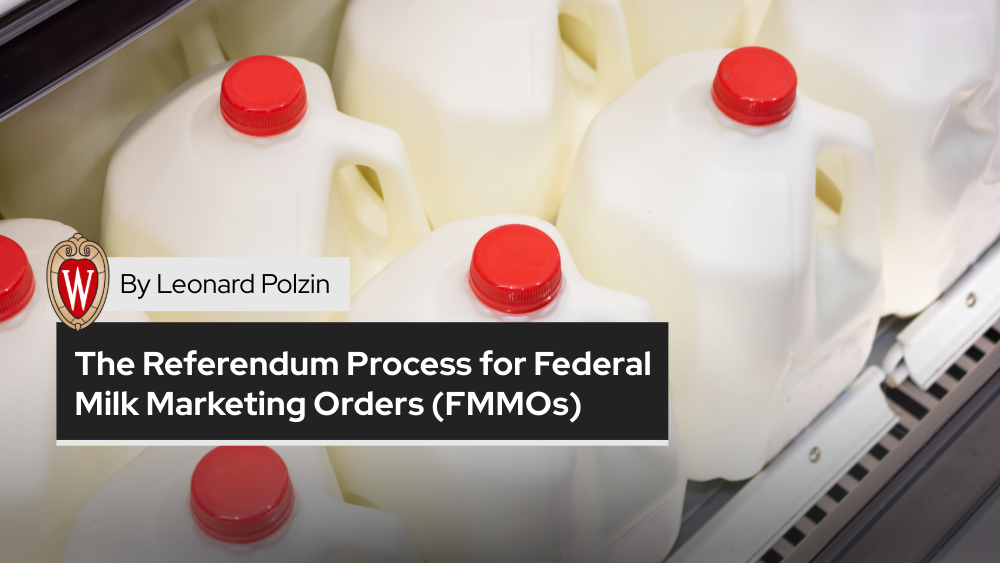
Introduction
The Federal Milk Marketing Order (FMMO) system, under the authority of the Agricultural Marketing Agreement Act (AMAA) of 1937, plays a critical role in promoting orderly marketing conditions within the U.S. dairy industry. A key feature of this system is the producer approval process, known as a referendum, which allows dairy producers to vote on changes or amendments to FMMOs. This paper will explore the referendum process, focusing on its procedural steps and the specific referendum process related to the currently ongoing National FMMO Price Formula Proceeding. The information provided here applies to FMMO referenda conducted by the Agricultural Marketing Service (AMS) Dairy Program.
Producer Approval Process (Referendum)
The producer approval process allows dairy producers to vote on proposed changes to Federal Milk Marketing Orders (FMMOs). This process is initiated after the Secretary of Agriculture issues a final decision following the hearing process. Producers cast a simple “yes” or “no” vote, deciding either to approve the order with the proposed changes or to reject it, which would eliminate the entire Order along with all its roles and functions.
Overview of the Rulemaking Process
The rulemaking process that precedes a referendum involves several steps. First, USDA conducts a public hearing or proceeding to gather input on potential changes to FMMOs. Following the hearing, interested parties may submit briefs, which USDA considers before issuing a recommended decision. This decision is published in the Federal Register and made available for public comment.
After the comment period closes, the Secretary of Agriculture decides whether to issue a final decision. If a final decision is issued, eligible producers in each impacted FMMO are given the opportunity to vote on the proposed changes.
Procedural Steps Leading up to a Vote in the Referendum Process
- Announcement of Final Decision and Representative Month: Once the Secretary issues a final decision, USDA announces the details of the proposed amendments and specifies a representative month. This month is used to determine producer voting eligibility based on the volume of milk pooled in an FMMO.
- Eligibility Determination: To be eligible to vote, producers must have pooled milk in the specified FMMO during the representative month and be actively engaged in dairy farming at the time the referendum ballots are issued. USDA uses records from milk handlers and other readily available sources to determine producer eligibility.
- Voting by Cooperatives and Independent Producers: Cooperatives that qualify under USDA rules may vote as a bloc on behalf of their members. This process, known as bloc voting, allows cooperatives to cast a single vote on behalf of all eligible members pooled on the FMMO. If a cooperative opts not to bloc vote, USDA will send individual ballots directly to eligible producers within that cooperative. Independent producers who are not members of a cooperative and have milk pooled in an order receive ballots directly from USDA.
- Ballot Distribution and Submission: Ballots are distributed to all eligible producers, including cooperatives that have opted to bloc vote. Along with the ballot, USDA provides a prepaid business reply envelope and a description of the proposed amendments. Producers must return their completed ballots by the specified postmark and received-by deadlines to ensure their votes are counted.
- Approval Criteria: For an FMMO amendment to be approved, the referendum must meet one of two criteria:
- At least two-thirds of the eligible producers voting in the referendum must vote in favor of the amendment, if not,
- Two-thirds of the milk volume represented in the referendum must vote in favor of the amendment.
In both cases, bloc votes cast by cooperatives are counted based on either the number of eligible producer members or the volume of milk they pooled during the representative month.
- Confidentiality: USDA ensures the confidentiality of individual votes. The number of votes cast and the manner in which each producer or cooperative voted are not publicly disclosed.
Procedural Steps Following the Referendum
Once the referendum is completed, USDA publishes the results in the Federal Register. If the referendum passes, USDA will issue a Final Rule, which sets forth the implementation details and timelines for the approved amendments. If the referendum fails, USDA will issue a Termination of Proceeding, effectively ending the FMMO.
Specific Considerations for National FMMO Price Formula Proceeding
In the case of the ongoing National FMMO Price Formula Proceeding, the referendum process would follow the same general structure. However, since multiple FMMOs are involved, USDA will conduct separate referenda in each FMMO impacted by the proposed amendments. Producers pooled on multiple FMMOs during the representative month would receive separate ballots for each FMMO, and they would be required to cast a vote for each FMMO where their milk was pooled.
Conclusion
The referendum process is a vital mechanism through which dairy producers participate in shaping the policies governing FMMOs. By adhering to the procedural steps outlined in the AMAA and the USDA’s guidelines, producers can ensure their voices are heard in decisions that affect their livelihoods. The referendum strives to be transparent and provide a structured framework for implementing changes or eliminating FMMOs.
References
Agricultural Marketing Agreement Act of 1937, 7 U.S.C. § 601 et seq.
USDA Agricultural Marketing Service (2024). Referendum Process Webinar: FMMO National Proceeding: Referendum Process (youtube.com)
USDA Agricultural Marketing Service (2024). National Federal Milk Marketing Order Pricing Formula Hearing: https://www.ams.usda.gov/rules-regulations/moa/dairy/hearings/national-fmmo-pricing-hearing


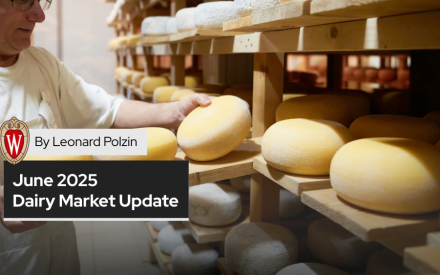 Dairy Market Dynamics and Domestic Constraints: A Dairy Sector Assessment as of June 2025
Dairy Market Dynamics and Domestic Constraints: A Dairy Sector Assessment as of June 2025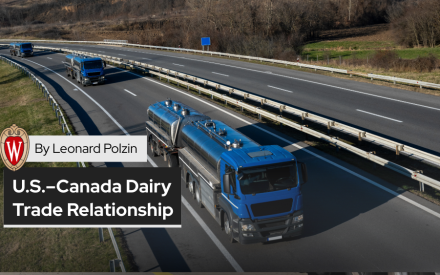 U.S.–Canada Dairy Trade Relationship (2025–Present)
U.S.–Canada Dairy Trade Relationship (2025–Present)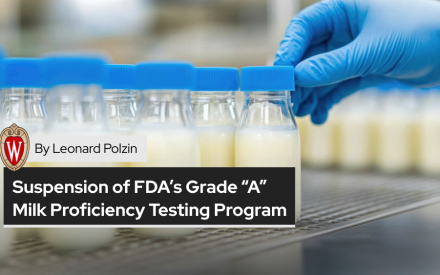 Suspension of FDA’s Grade “A” Milk Proficiency Testing Program – A Comprehensive Analysis
Suspension of FDA’s Grade “A” Milk Proficiency Testing Program – A Comprehensive Analysis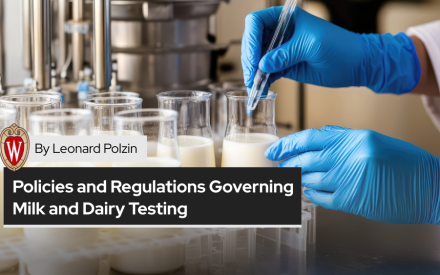 Policies and Regulations Governing Milk and Dairy Testing: A Wisconsin Overview
Policies and Regulations Governing Milk and Dairy Testing: A Wisconsin Overview


